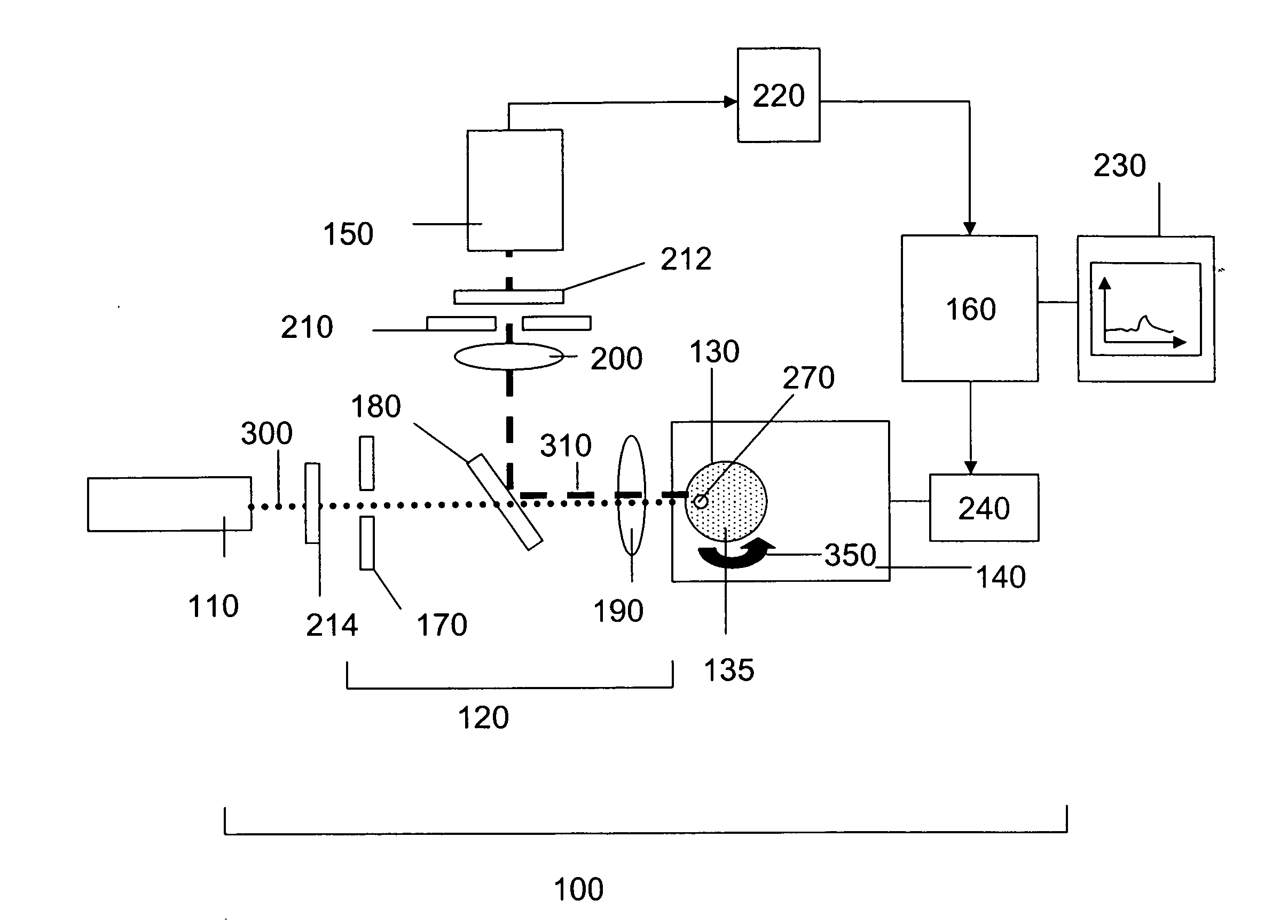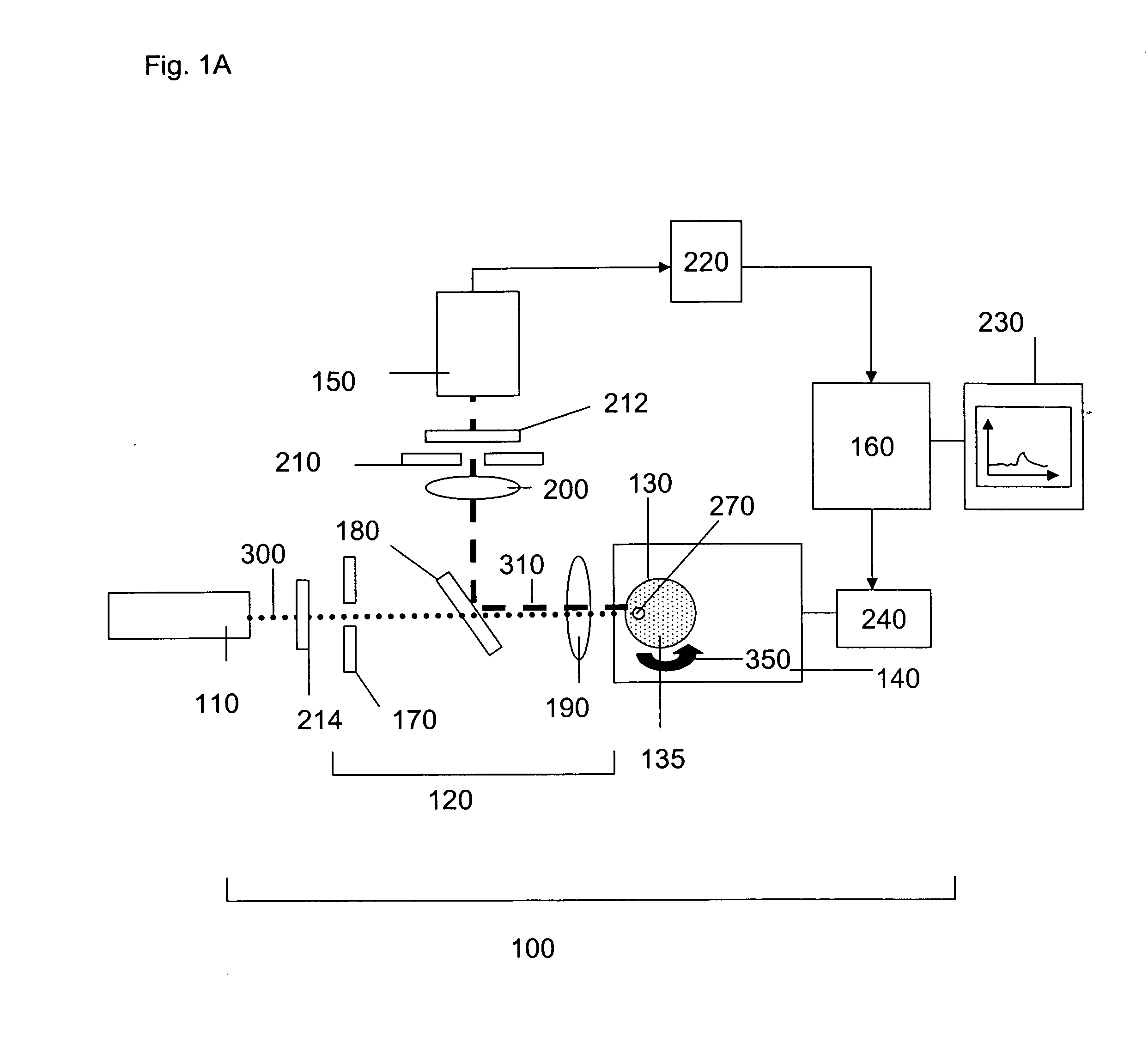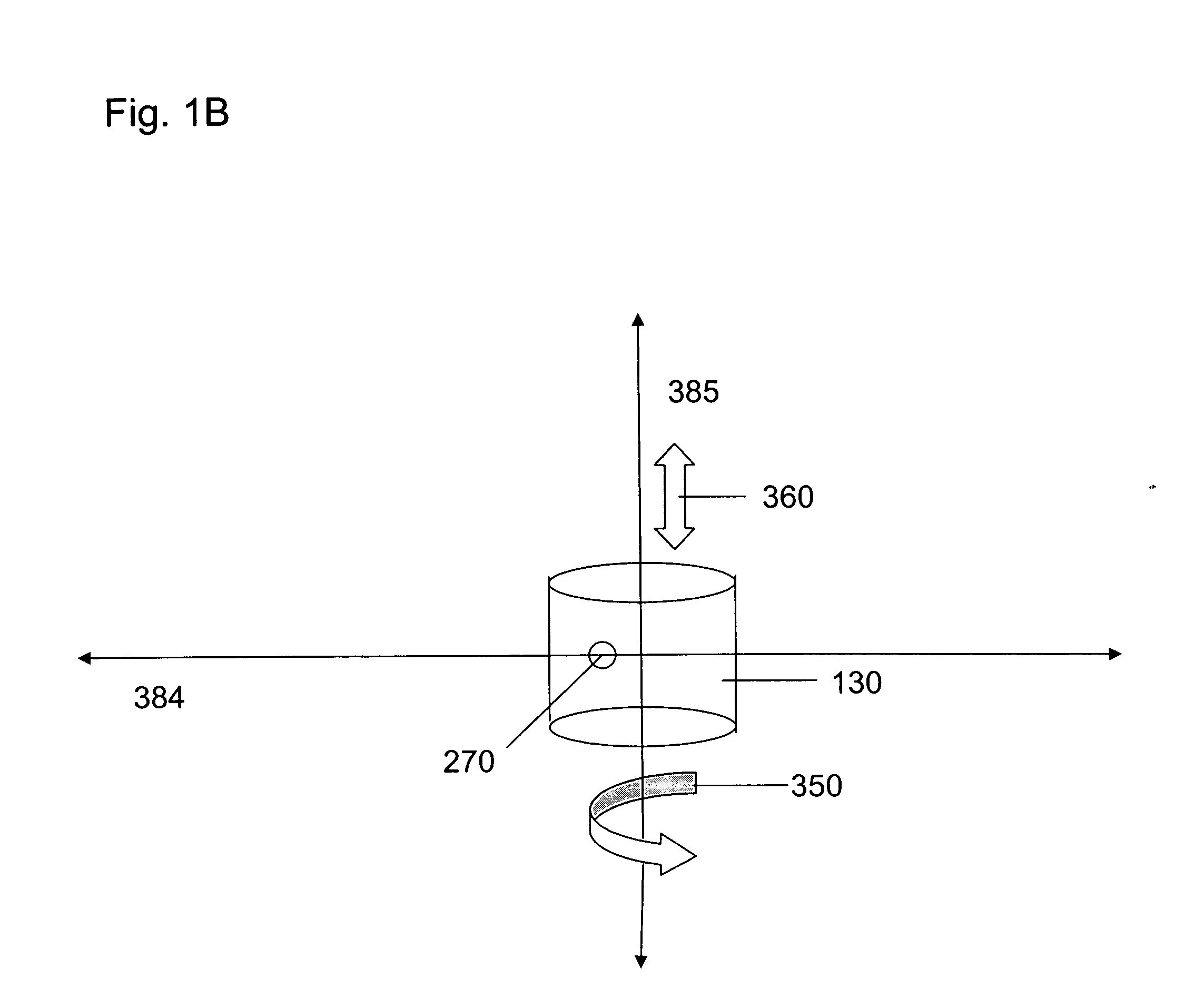Methods and devices for characterizing particles in clear and turbid media
a technology of turbid media and particles, applied in the direction of fluorescence/phosphorescence, material excitation analysis, instruments, etc., can solve the problems of narrow dynamic range of conventional optical flow cytometers with respect to the size of particles analyzed, inability to effectively carry out necessary filtration, and inability to accurately classify particles, etc., to achieve the effect of high portability, convenient operation and accurate classification
- Summary
- Abstract
- Description
- Claims
- Application Information
AI Technical Summary
Benefits of technology
Problems solved by technology
Method used
Image
Examples
example 1
Analysis of Fluorescent Spheres in Clear and Turbid Media
[0097] To verify the ability to accurately measure the concentrations of particles in samples, an optical analysis device of the present invention was used to determine the concentration of orange fluorescent spheres, 1.0 μm in diameter (Molecular Probes, F-8820) in both a clear buffered solution and a Lyposin solution (20% weight diluted 1:80) comprising a scattering sample. A small halogen lamp combined with a green filter (525±60 nm) was used as the optical source to provide excitation light in these measurements. Concentrations of orange fluorescent spheres in these samples as low as a few hundred spheres per milliliter were measurable using the present optical analysis device employing a 1-minute sample scanning time.
[0098]FIG. 7 shows an exemplary photon current histogram and FIG. 8 shows a plot of total counts (peaks in the fluorescence temporal profile) as a function of particle concentrations generated using the pre...
example 2
Analysis of the Somatic Cell Count in Milk
[0101] Mastitis is the most costly disease of dairy cattle. Estimates of the total losses due to this disease in the U.S. are in the range of 1.5 to 3.0 billion dollars annually. Since cell counts in milk are closely associated with udder health, the somatic cell count (SCC) is accepted as an international standard measurement of milk quality. As a result, inexpensive, reliable and portable methods and devices for measuring the somatic cell count in milk are currently needed.
[0102] The ability of optical analysis devices of the present invention to determine the concentration of somatic cells in milk was experimentally verified. In these measurement, fresh milk was obtained from the dairy cattle research unit of the University of Illinois. Milk samples were diluted to ¼ in TRIS buffer prior to analysis. Initially experiments were performed on a sample comprising milk from a cow undergoing treatment for Mastitis. The somatic cell count corr...
example 3
Optical Analysis of E. Coli Bacteria
[0104] The ability of the present invention to measure the concentration of microoganisms, such as bacteria, was verified experimentally. In these experiments, E. coli bacteria were left to multiply for several hours in Luria Broth at a temperature of 37° C. and 300 rotations-per-minute agitation in an incubator shaker (New Brunswick Scientific, C24). A MOPS buffer solution was then used for sample dilutions. The bacteria were tagged with Sytox Orange, a DNA probe. FIG. 12 shows the calibration generated from fluorescence temporal profiles corresponding to the significantly dimmer fluorescence of the bacteria. As shown in FIG. 12, concentrations well below 100 per milliliter are able to be measured employing a 1-minute scanning time. In addition, the software used for data analysis also performed an intensity analysis. FIG. 13 provides an amplitude histogram (i.e. intensity distribution), which demonstrates the ability of the present methods to c...
PUM
| Property | Measurement | Unit |
|---|---|---|
| distance | aaaaa | aaaaa |
| volume | aaaaa | aaaaa |
| width | aaaaa | aaaaa |
Abstract
Description
Claims
Application Information
 Login to View More
Login to View More - R&D
- Intellectual Property
- Life Sciences
- Materials
- Tech Scout
- Unparalleled Data Quality
- Higher Quality Content
- 60% Fewer Hallucinations
Browse by: Latest US Patents, China's latest patents, Technical Efficacy Thesaurus, Application Domain, Technology Topic, Popular Technical Reports.
© 2025 PatSnap. All rights reserved.Legal|Privacy policy|Modern Slavery Act Transparency Statement|Sitemap|About US| Contact US: help@patsnap.com



